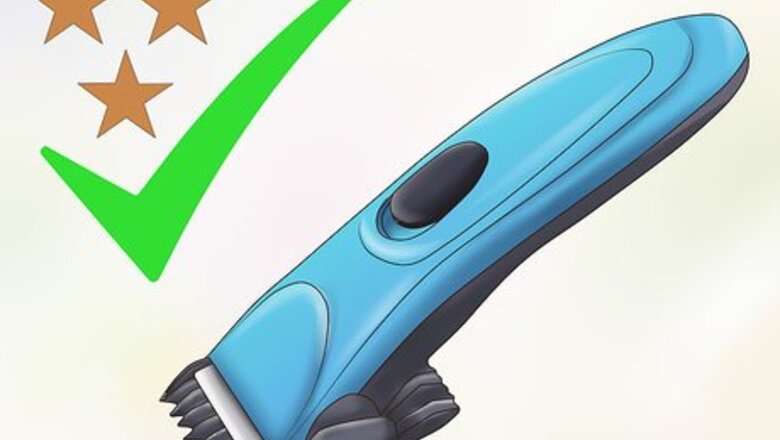
views
Assembling Your Tools
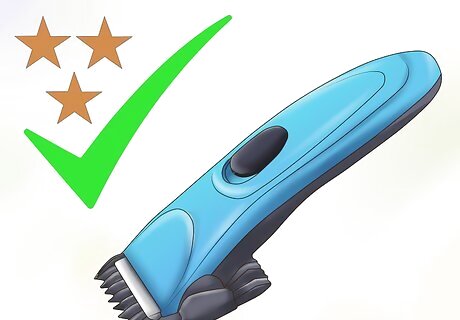
Choose a professional-grade clipper. There are affordable clippers marketed for general customers, but you’ll find these won’t be able to handle the challenge of a thick coat. While fine for a Yorkshire Terrier or Shih Tzu, a cheaper set won’t be up to the task of a Labrador, Collie, or Akita. Go with a professional-grade set from your local pet store. Ask a store employee for help finding the best set for your dog’s breed. A professional set will typically cost between 130 and 160 US dollars. This is still cheaper than taking your dog to the groomers regularly. Professional clippers use interchangeable blades that can be removed and inexpensively resharpened, preserving their longevity.

Use #4 FC or #5 FC clipper blade. Many professional clippers come with a #10 blade, which trims too short for most long-haired dog breeds. When it comes to blade numbers, the higher the number, the shorter the cut. Note that a #7 will risk pulling the skin between teeth, causing tearing and cuts. For the same reason, unless you are very experienced, you should make sure your blade is marked FC, or finish cut. The alternative, a skip-tooth blade, can pull and tear at skin if you aren’t experienced. As an additional precaution, look for a clipper with a guide comb attachment. This comb will prevent the blade from getting too close to your dog's skin and cutting the dog.
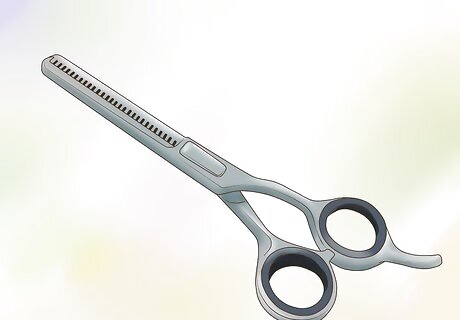
Go with blunted-edge and thinning shears. You won’t be able to use clippers on more sensitive areas, like around your dog’s eyes, private parts, and feet. Choosing blunted-edge shears is best for inexperienced groomers. If the dog jerks or moves unexpectedly, a sharper edged shear might cause an injury. Thinning shears are a good choice, too. They only trim a specific area instead of the entire run of the shear blade, so you’re less likely to unintentionally cut out a chunk of fur. If you’re just giving your dog a quick trim, skip the clipper cut and just use shears on the detailed areas. If your dog’s full coat needs a trim, don’t use shears on the entire body. This is time consuming and you’ll have a higher risk of making a mistake or hurting your dog with the shears.
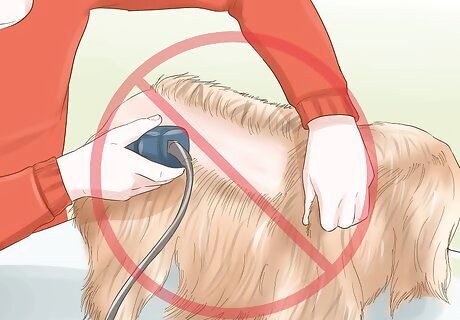
Avoid shaving your dog. Even during the summer, you should never shave your long-haired dog’s coat down completely. You can trim down for a summer cut, but still leave around an inch of fur, depending on the breed. It’s always best to ask your vet or professional groomer for advice before attempting to trim, especially if you’re inexperienced.
Clipping Your Dog’s Coat
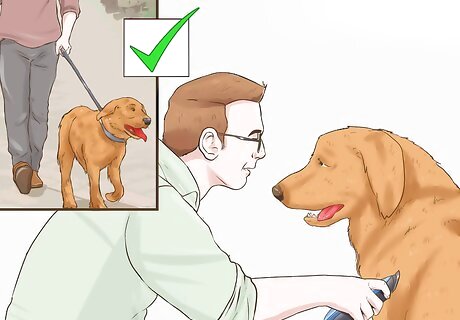
Groom your dog when it’s calm. Your best bet is to groom your dog just after it’s expended some energy, like when it’s calm after a walk or playtime. Train your dog to love grooming time by giving it a small food treat each time you bathe, brush, or trim it. Give it extra treats to reward calm behavior. Just before you start grooming, pet your dog all over to get prepare it for all the handling that will come with trimming. Try to keep grooming sessions positive and happy. Start with shorter grooming sessions at first, and give your dog a break if it gets too antsy.
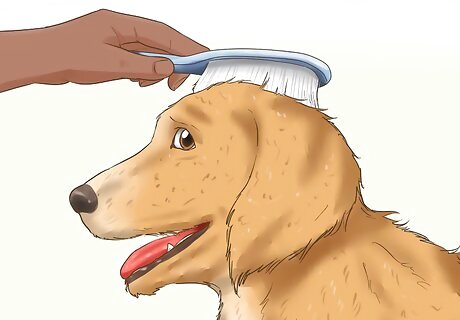
Brush through your dog’s coat. Before you trim the coat, make sure it’s free of matting and debris. Thoroughly work through it with your dog’s favorite brush. If you’ve just bathed your dog, give it a blow dry and make sure the coat is completely dry before trimming. Be sure to use a cool or warm setting so you don’t burn your dog.
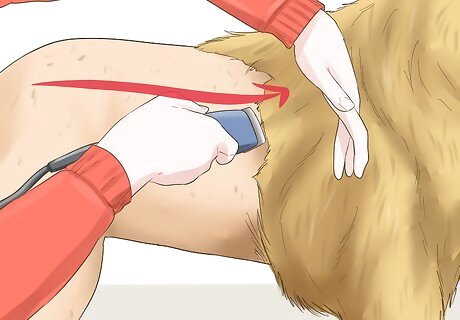
Clip its body with the lay of the hair. Turn the clippers on, and run the blade down your dog’s body, starting with its back. Periodically check the blade’s temperature with the back of your hand to make sure it’s not too hot. Always move with the lay of the hair, or from the neck down the rear, for best results. If your dog isn’t trained to calmly sit still as you run the clippers through its coat, try to keep it still by gently holding it in place with your other hand. Remove and set aside or discard tufts of trimmed hair as necessary.
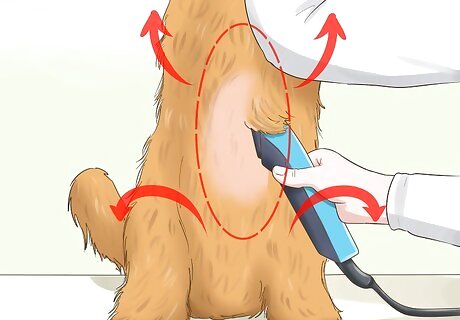
Clip its belly and larger patches on its front legs. Proceed to clip its belly, areas where its legs meet the belly, and upper portions on the legs. Gently guide your dog’s legs where you need to clip as needed, and lift it up with your other hand to access its belly areas. Continue to work with the lay of the fur, from neck to rear on the belly and from upper leg down. Areas on the lower legs will probably be too short for the blade you’re using on the body, so they’ll need more detailed trimming using thinning shears. You can most likely skip over clipping them for now.
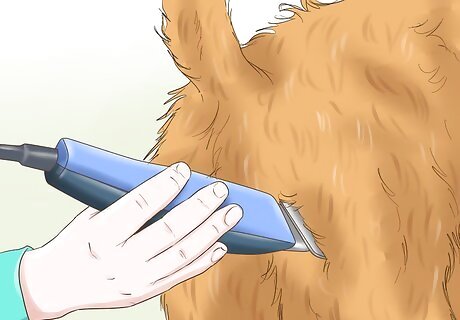
Trim your dog’s back legs and rear. Continue to trim its back legs, once again working from the upper leg down. Its rear is one area that will require a little special attention. You’ll want to carefully trim the area with shears later to avoid anything getting stuck in the fur when your dog goes to the bathroom. Use the clippers on the haunches and thighs, but save the fur around the lower legs, private areas, and tail for the shears.
Using Shears for the Details
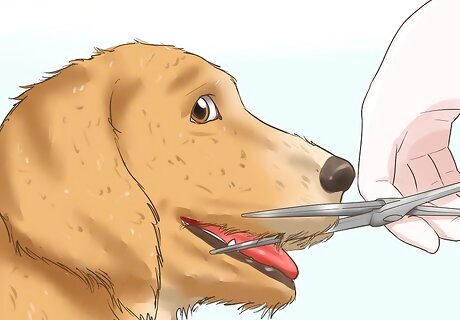
Trim your dog’s face. Use a comb to gather hair away from your dog’s eyes. Gently pull away the hair, and use your fingers to hold it as you use shears to trim above and below the eyes. Do your best to give a straight, even cut, so the hair around one eye is even with the other. Trim around its muzzle, especially where food gets trapped. Again, pull hair away with a comb and use straight, even lines. Be cautious with the blade around your dog’s face, especially if you’re not using blunt-edged shears. If your dog is calm while you trim around its face, be sure to reward it with a treat!
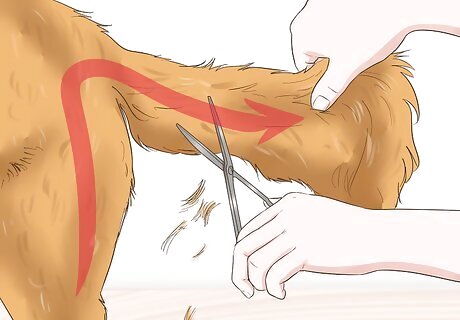
Cut excess fur from the tail and rear end. Trim fur away from where your dog goes to the bathroom to make sure feces won’t get stuck in excess fur. Continue along the tail. If desired, trim closer to the skin where the tail begins, and leave more fur the further up the tail you go.
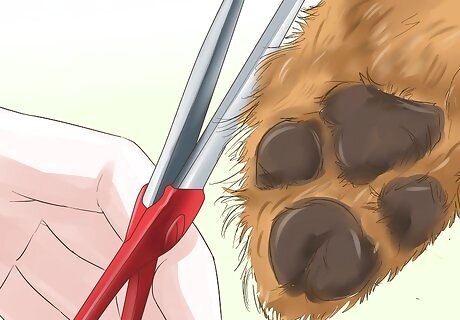
Trim your dog’s feet. With the dog standing straight, use the shears and comb to trim the lower legs. Look for tufts of hair that bunch from between the toes, and trim them down so they’re level with the tops of the dog’s feet. Do the same for tufts of hair protruding below the feet. Make sure to only trim the tops and bottoms of your dog’s feet, or the hair that sticks out from these areas. Don’t cut between your dog’s toes or paw pads.
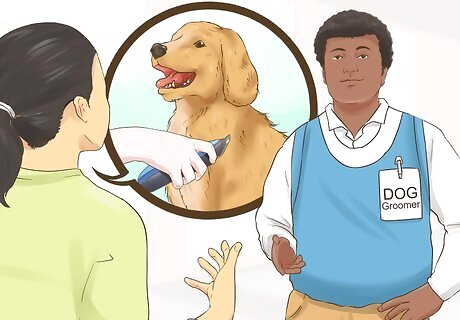
Find a groomer if you need help. If you're planning on showing your dog, your dog's fur has lots of mats, or if you are unsure about your clipping skills, find a good groomer. Ask your family and friends for a recommendation. Your dog's vet or trainer can also refer you to a good groomer. It's best to choose a groomer who graduated from a reputable pet grooming school and who holds a professional certificate. However, there are also plenty of well-trained groomers who have earned their experience by working at a grooming shop, so choose someone who has a good reputation and a lot of hours of experience. When you have a couple of good choices, check their reviews online or with the Better Business Bureau to see if they have a history of complaints. Ask about cost. Generally, grooming costs between 40 and 60 US dollars, but can be more for larger breeds with longer coats.

















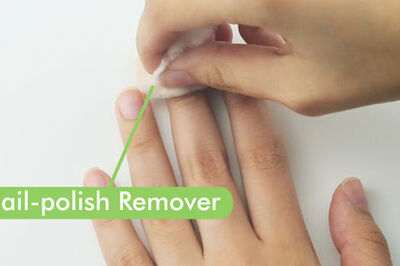
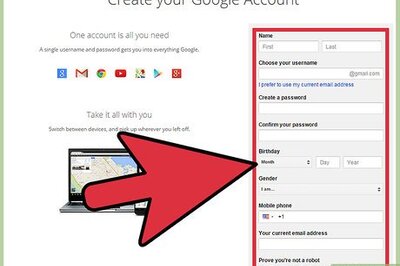
Comments
0 comment